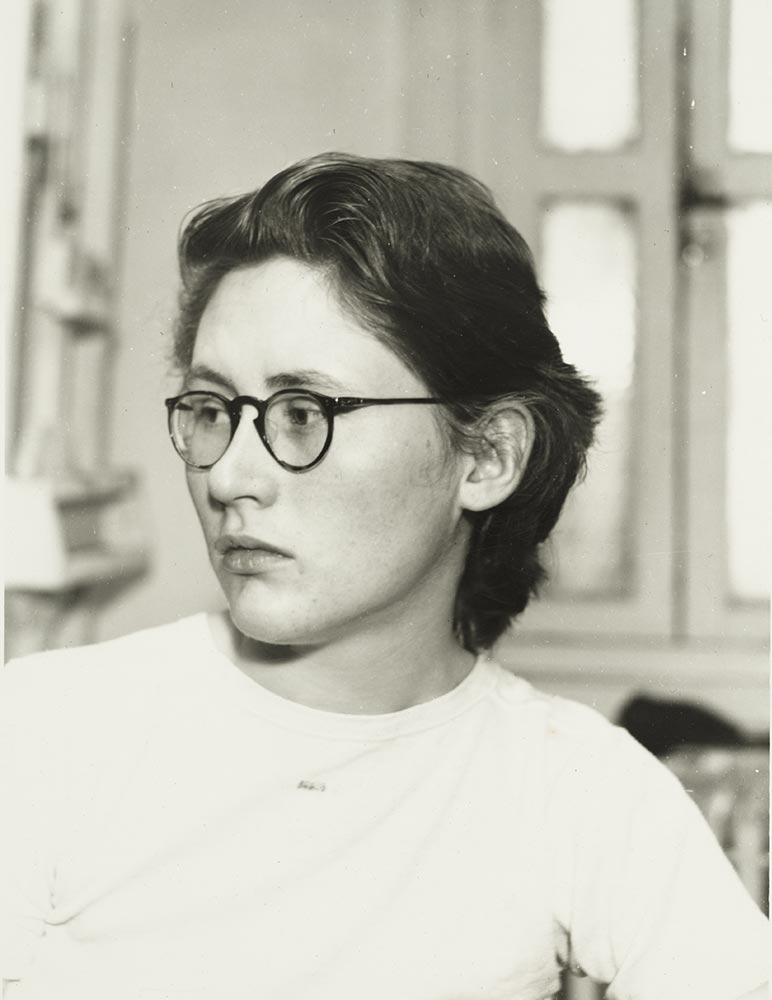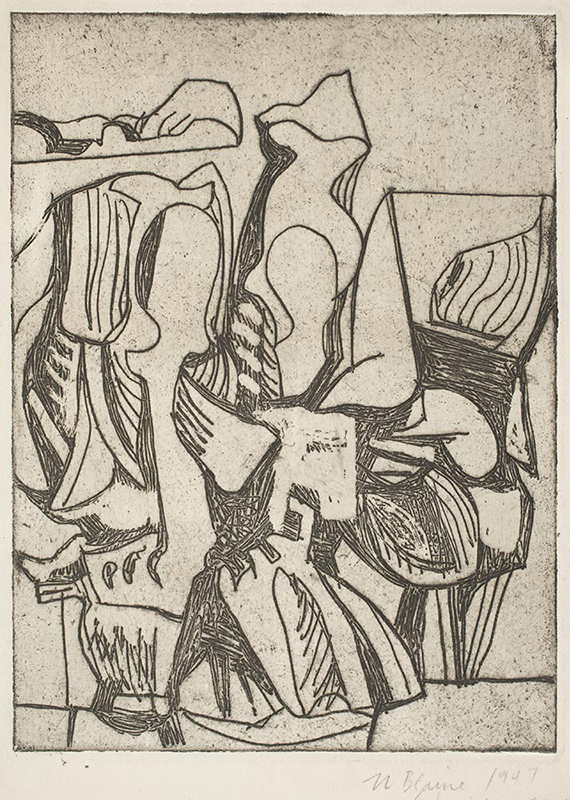11. Nell Blaine
| Life Dates | 1922-1996 |
| Place of Birth | Richmond, VA, USA |
| Place of Death | New York, NY, USA |
| Birth Name | Nell Blaine |
Born into a working-class family in Richmond, Virginia, Nell Blaine was afflicted with terrible eye problems—extreme nearsightedness and cross-eyes—that gave her an introspective focus and fueled her determination to acquire basic drawing skills. In 1939 she entered the Richmond Professional Institute’s School of Art, made possible through a work-study scholarship. Among her teachers was Worden Day, a guest instructor and fellow Virginian who had spent several years studying and working in New York. Their meeting was kismet. The two shared similar family backgrounds, both having fairly religious parents who disapproved of their artistic activities. Given their ten-year age gap, Blaine looked up to Day as a mentor, and Day enjoyed serving in this role, one of the first indications of her inclinations toward feminist solidarity. According to Blaine, Day was a major early influence: “She activated a lot of strivings for me and urged me to read, among other things, Virginia Woolf’s ‘A Room of One’s Own.’ It was Worden who got me interested in landscape painting.”1 Day also urged Blaine to move to New York, which she did in 1942. Blaine thrived there, attending class with Hans Hofmann while working part-time—sometimes in office jobs, sometimes as a monitor in Hofmann’s studio—to make ends meet. In 1946 Blaine applied the funds from a fellowship awarded by the Virginia Museum of Fine Arts to pursue instruction at Atelier 17, almost certainly at the suggestion of Day.2 She made six plates using a combination of engraving and etching, all of which showcase the type of organic abstraction that typified her style at this time. Blaine never printed more than a handful of impressions and never exhibited them much, keeping the proofs in a folder labeled “OLD ETCHINGS.”3 Blaine was a key part of the New York avant-garde during this period, as a member of the American Abstract Artists and the Jane Street Gallery, one of the first artist-run cooperatives. She was also part of the stable of artists at Tibor de Nagy Gallery. Blaine returned to printmaking much later in her career, decades after recovering from the paralyzing effects of polio.
Archives
Nell Blaine papers, 1930-1985, Archives of American Art, Smithsonian Institution.
Research files for The Stamp of Impulse: Abstract Expressionist Prints (exhibition), Worcester Art Museum, Worcester, Mass.
Selected Bibliography
Acton, David. “Nell Blaine.” In The Stamp of Impulse: Abstract Expressionist Prints. New York: Hudson Hills, 2001.
Sawin, Martica. Nell Blaine: Her Art and Life. New York: Hudson Hills Press, 1998.
Notes
- Quoted in Martica Sawin, Nell Blaine: Her Art and Life (New York: Hudson Hills, 1998), 18. ↩
- Blaine had some previous printmaking experience through Will Barnet’s Saturday etching classes at the Art Students League, which she attended just after arriving in New York. See her student registration card, Art Students League, New York. ↩
- Carolyn Harris, Nell Blaine’s partner, explained Blaine’s participation at Atelier 17 in a series of letters to David Acton, then serving as curator of Prints, Drawings, and Photography at the Worcester Art Museum. These letters, dated between July 1997 and May 2001, are in the Worcester Art Museum’s files. ↩

